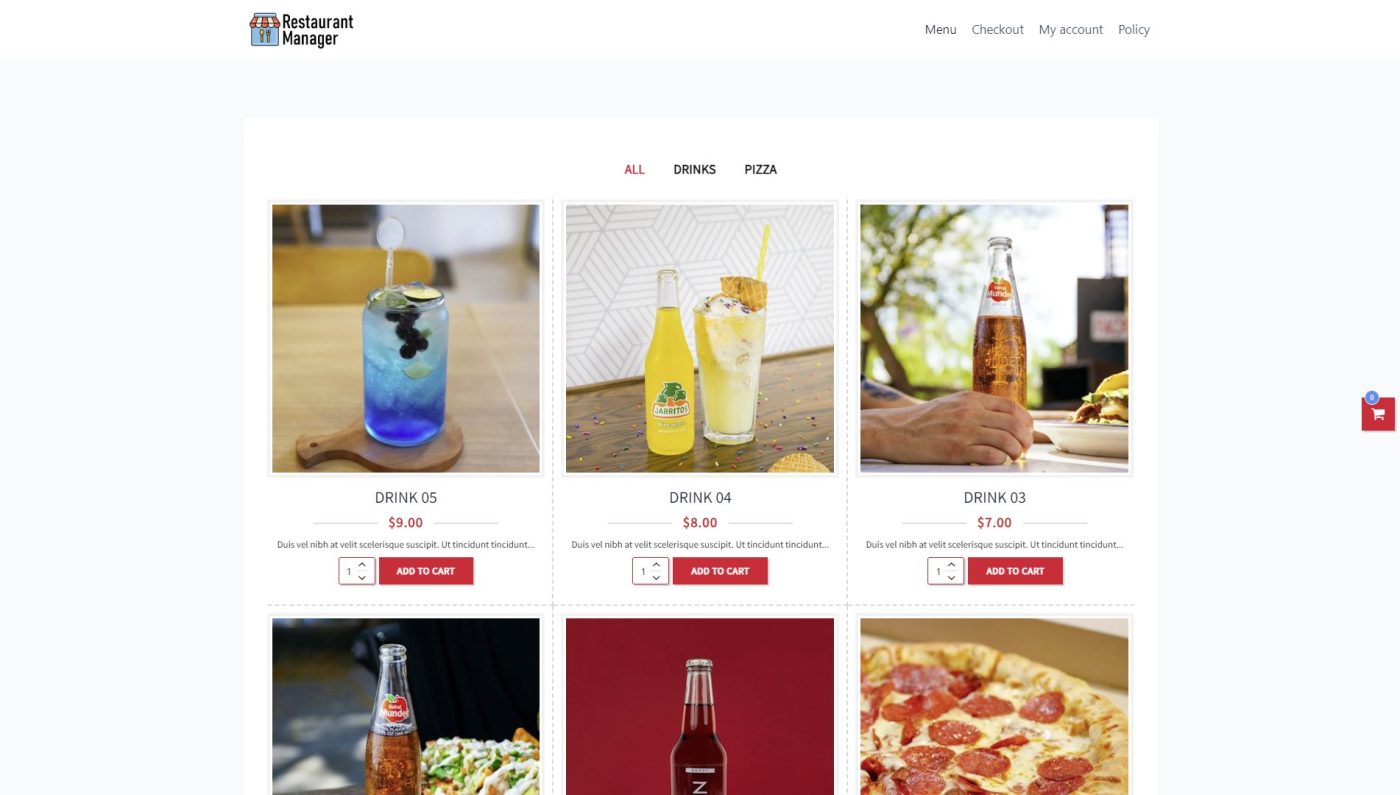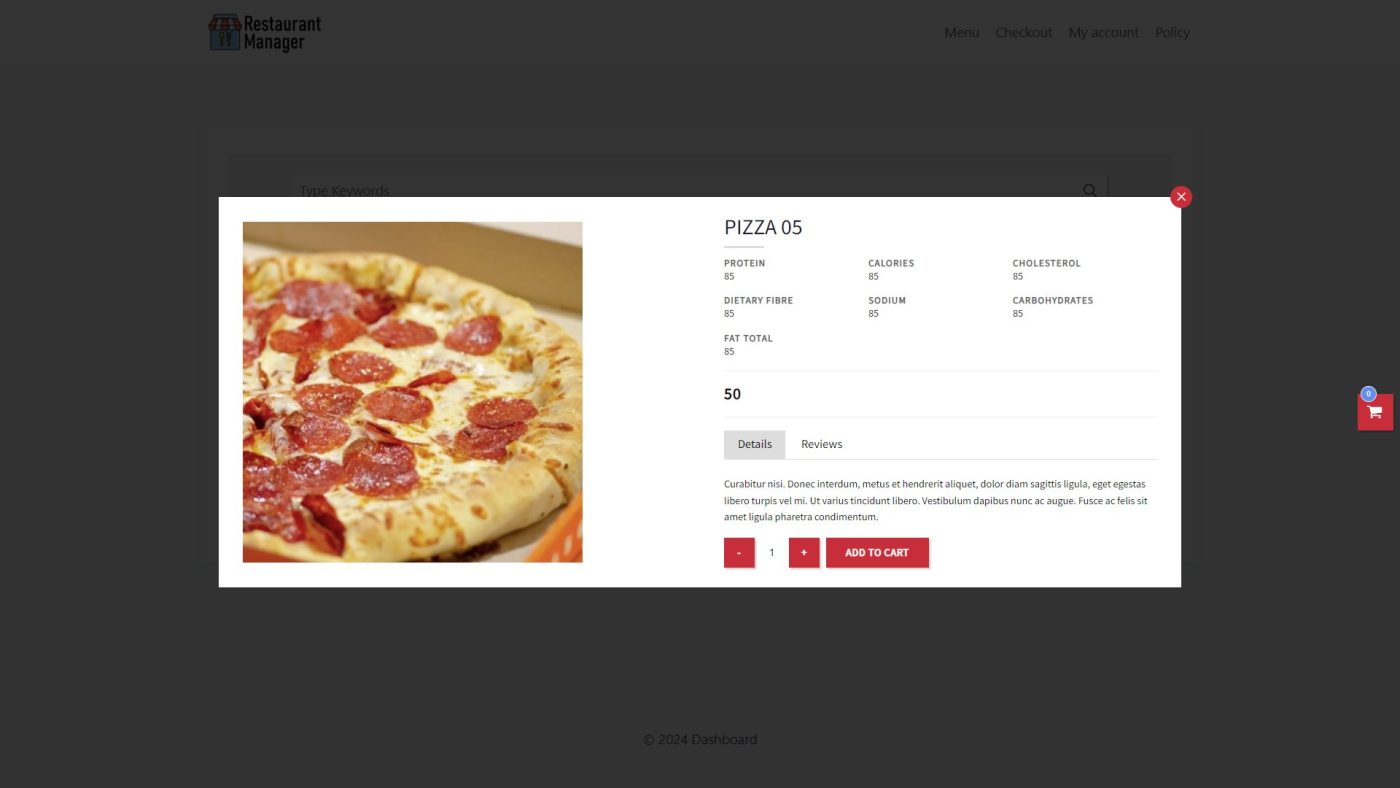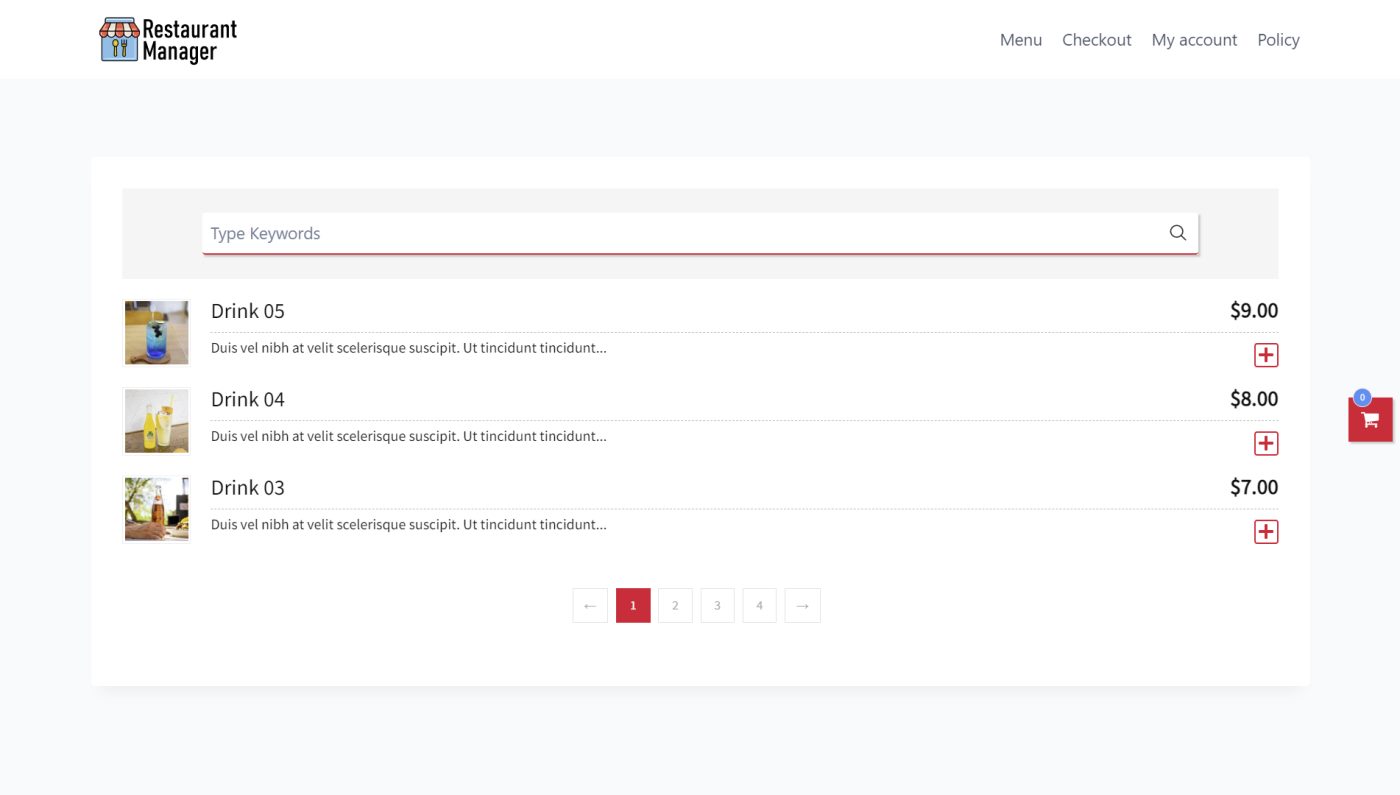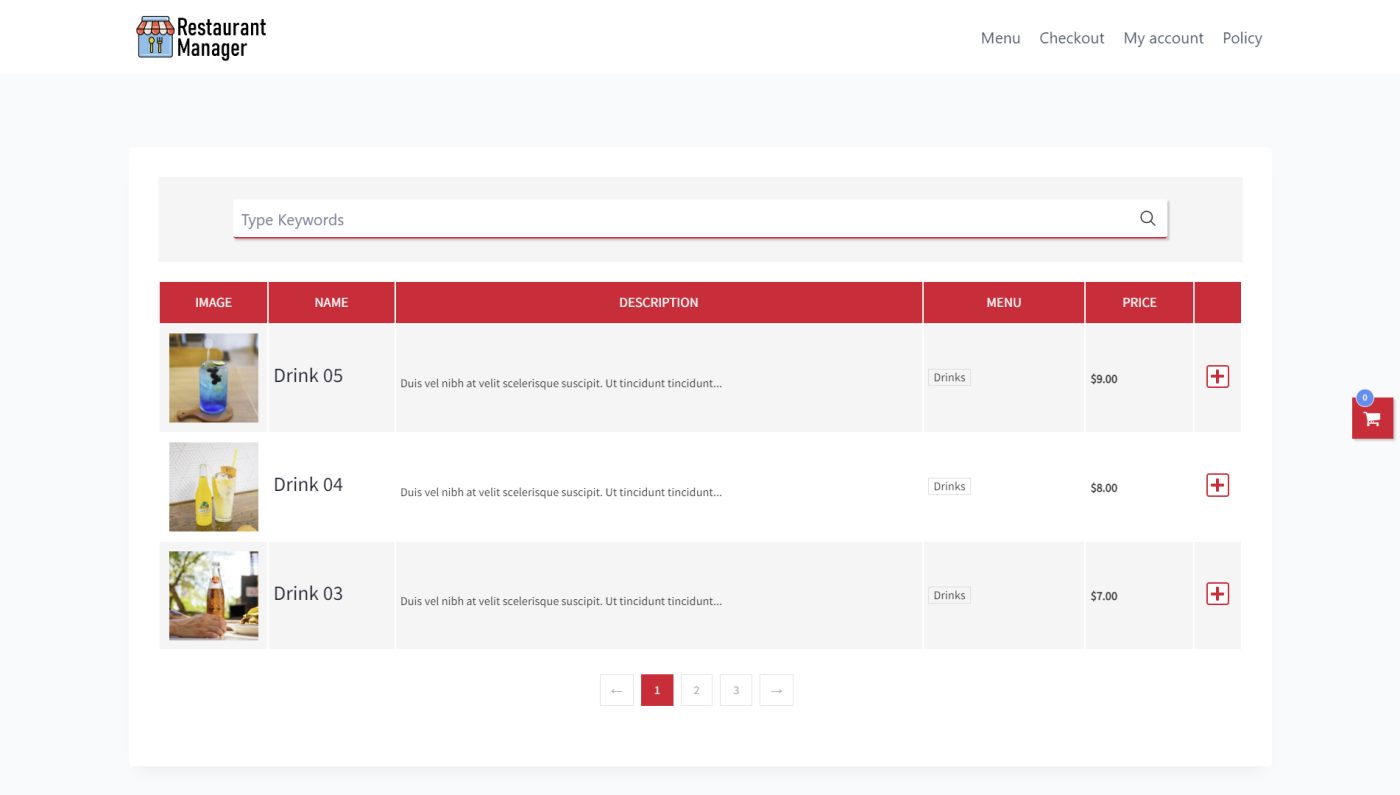IMPORTANT
The WildCloud platform is no longer available. This page remains published for historical purposes only.
Welcome. This lesson is part of our free course “Building a Restaurant Management Platform with Wildcloud”.
In the previous lesson, we created the frontend dashboard pages and configured the frontend dashboard settings on our Wildcloud application. In this lesson, we will create and set up a site template for our restaurants platform.
This site template will automatically clone to every new site added to our restaurant management platform.
What you’ll learn in this lesson:
What is a template site?
A template site is a tenant within your Wildcloud application that is used as a pre-configured / pre-built site or store, and the new stores created by your clients will be copies of this template site, including all the content and configurations of the template site.
On Wildcloud, this is achieved through tenant snapshots, so when we finish configuring our site, we must convert it into a tenant snapshot.
Each subscription product you sell on your platform (membership plan) must contain two things:
- A tenant role, which we created in past lessons, and is the group of features that our tenants/sites will have.
- A tenant snapshot, which we will create in this lesson, and is a site template that will be automatically cloned to the client sites that buy this subscription
Note – More on subscription products in the next lesson.
You can design your site templates / prebuilt sites as you want. We’ll focus on showing you how the basic steps, but you decide the final site’s appearance and content.
To keep it simple, we suggest that the sites or tenants to be created based on this template contain only the home page (where we will display the restaurant menu using different styles that we can select from the frontend dashboard) and these WooCommerce pages: Checkout, My account, Policy.
Here’s what your site template will look like with different menu styles:





Creating a new site
We need to start creating our template site by creating a new site.
Just follow these steps:
Step 1 – Log in to your Wildcloud account.
Step 2 – Open your restaurant management application by clicking on Go To App, not the storefront application.
Step 3 – On the Tenants section, click on Add tenant.
Step 4 – Add the site Name and click on Submit.
You can add the name you want, and you’ll see that the name will be added as a prefix to the domain name.
Once the site is ready, you’ll see it in the tenants/sites list.
Step 5 – Click on the site Name to view more details.
Optional – If you want to add a custom domain to this site, just follow the instructions in the Domains tab. Then just select the new domain as Main Domain.
However, we will use the default domain in this example.
Add a tenant role to your site template
The first thing we are going to do is to add a tenant role to our site template.
This is necessary because tenant roles allow us to define the features that the site will have.
We must assign the tenant role that we will sell with the subscription product or membership plan.
To do this, follow these steps:
Step 1 – Click on Login as [your username].
When you open the wp-admin dashboard of the site template, you’ll see a notice telling you that you need to add a PHP constant to assign the tenant role to this site.
Step 2 – Go to your site/tenant details and click on the PHP Constants tab.
Step 3 – Click on Add PHP Constant.
Step 4 – Add this on the Name field:
WPCS_TENANT_ROLES
Step 5 – Add the tenant role’s slug in the Value field.
Step 6 – Click on Submit.
After that, you can reload the page in wp-admin, and you’ll see the notice won’t display anymore.
Set up the site template
Now you can proceed to design the site as you prefer.
Here we will only give you some recommendations of what you should do, but keep in mind that this is a regular WordPress site, and you have total freedom to configure any theme, pages, etc. that you want.
1- Make sure this is a client site
If you check the WP Frontend Admin settings on this site (Frontend Admin > Settings), you will see that WP Frontend Admin has automatically detected this site as a client tenant/site.
This will happen for all other sites you add to your Wildcloud application, including sites that are created when a user purchases a subscription or membership plan on your platform, because WP Frontend Admin is configured in the dashboard site only.
2- Edit the site’s title/name
By default, Wildcloud assigns a generic name to all sites, so we need to change that.
Go to Settings > General and change the site’s name in the Site Title field.
You can also edit or remove the Tagline.
Once you’re done, save the changes.
3- Customize the site
You can customize the site’s appearance like colors, typographies, etc.
Just go to Appearance > Customize and start customizing your site.
4- Create the menu style pages
With the WooCommerce Food plugin, we can add different menu styles by using the menu style shortocodes.
There are two ways to use the WooCommerce Food shortcodes:
- Use the shortcodes on this page
- Build the shortcodes using the Shortcode Builder
To create different menu styles, you need to go to Pages > All pages > Add new page. Once there, you need to add the page title and enter the shortcode in the page content.
For example, you can add any of these shortcodes:
Grid menu style:
[ex_wf_grid column="3" posts_per_page="6" cat=" page_navi="loadmore" menu_filter="show" filter_style="icon"]
Table menu style:
[ex_wf_table style="1" count="" menu_filter ="" order_cat="" live_sort="" posts_per_page="" ids="" cat="" page_navi="" number_excerpt="" cart_enable ="" order="" orderby="" meta_key="" enable_search="yes"]
Simple table menu style:
[ex_wf_list style="1" count="10" menu_filter ="" order_cat="" menu_pos="" posts_per_page="" ids="" cat="" page_navi="" number_excerpt="" cart_enable ="" orderby="" meta_key="" enable_search="yes"]
Categories grid menu style:
[ex_wf_mngroup layout="" style="" column="" heading_style="" count="" posts_per_page="" cat="" order="" orderby="" meta_key="" meta_value="" number_excerpt="" page_navi="" order_cat="" cart_enable="" enable_search="" featured="" enable_modal="" class=""]
Besides the menu style pages, we will keep these WooCommerce pages:
- Shop
- Cart
- Checkout
- My account
- Refund and returns policy. Note. We recommend you to edit the terms, publish the page, and rename it “Policy” so it takes less space on the navigation menu.
5- Select the site’s home page
Go to Settings > Reading and select the site’s home page at Your homepage displays > A static page > Homepage.
In this example, we will select one of the Menu Style pages as the site’s home page.
6- Set up the site’s navigation menu
You can create a navigation menu for this site and add these items:
- A custom link to the site’s domain called “Menu”, so that every time your platform users select a different menu style on the frontend dashboard, the menu style changes.
- Cart page
- Chackout page
- My account page
- Policy page
7- Optional – add a link to the frontend dashboard
You can add a link to the frontend dashboard site so that your logged-in users can access the frontend dashboard right on the navigation menu.
In Custom Links, add the frontend dashboard URL.
In Link Text, you can add something like “Dashboard”.
If you installed and activated the User Menus plugin, you can add conditional visibility to this menu item.
For example, we will select Logged In Users because we want this menu item to be visible to logged-in users only.
We will also select Administrator and Shop manager as the roles who will view the frontend dashboard link.
This means customers won’t see the link on the navigation menu.
This is what our website will look like when we have not logged in.
And if we have logged in as administrators or shop managers, we will see the Dashboard link on the navigation menu.
Create a tenant snapshot
As we have explained in this lesson, in order for this site to be a template site, you need to create a tenant snapshot based on this site.
For this, go to your application and click on View all snapshots.
Now move to the Tenant Snapshots tab and click on Add tenant snapshot.
Finally, you need to fill out the form with the following fields:
- Name: Add the template name here.
- Comment: You can add a description here.
- Group name: You can create a tenant snapshots group by adding the name here.
- Tenant: Select the site or tenant on which this snapshot will be based. Here you’ll see the Dashboard and the Template sites. You should select Template.
- Once you have selected these values, click on Submit and the tenant snapshot will be created.
With the creation of the dashboard site and the template site, we have completed the sites necessary for our platform to work.
In the next lesson, we will work on the storefront site, where we will set up a subscription product (membership plan) that we can sell to our customers to create an online store on our platform.




















